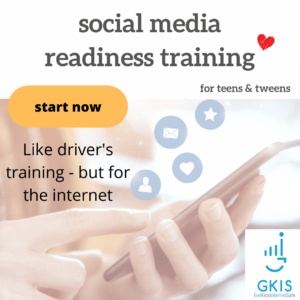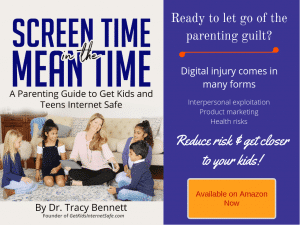
It’s a new augmented reality world. With Nintendo’s July 6th launch of the free smartphone app, Pokémon Go, the virtual gaming world has meshed with our nonvirtual lives on a pervasive scale. Using augmented reality technology, or layering of virtual play onto the real world, game strategists have dialed in on the components necessary to trigger compulsive integrated gaming, and it’s spreading like a virus. Within one week of launch there are millions of downloads worldwide and Nintendo stock has skyrocketed. This scope of cultural popularity is a capitalist’s dream. Even the pasty-white gamers rarely seen outside of their darkened screen dens are roaming the streets in search of Pokémon critters “inhabiting” our streets and businesses. Due to hyper-focused roaming while gaming, parents are afraid of targeted criminal threats, companies are alarmed at security risks, doctors are treating game-related injuries, companies are trying to lure roaming gamers through their doors, and everybody else is having an awesome time capturing virtual pocket monsters. What do you need to know to catch up on the hype and keep you family safe? GetKidsInternetSafe is here to review the basics, the benefits, and the risks.
How does one play Pokémon Go?
First download the free Pokémon Go app to your smartphone, nickname your avatar, and walk out your door to search for Pokémon characters. In cooperation with Google Maps data, Nintendo has made it possible to view cartoon characters superimposed on your smartphone’s camera screen map in real-life places like parks, schools, and museums. Walk down any street and wait for your smartphone to vibrate if there is a Pokémon ready for capture nearby.
Once spotted, Pokémon characters can be captured and virtually collected in your Pokedex so they can be trained, enhanced, and readied for battles with other players. Each Pokémon character’s value and strength are reflected by its combat points or the color of the circle that surrounds the character. With each capture, the player also receives Stardust or Candy which can be used to power-up your character to make it a more powerful fighter. Poke Stops are special locations where players can find digital items like potions, poke balls, and eggs. Gyms are battle sites available to level 5 and above players who have joined one of three teams, Instinct, Mystic, or Valor. Players also have the option to buy PokéCoins, which is in-game currency used for purchasing power-ups, extra items, and playing enhancements.
What are the benefits of Pokémon Go?
- Fun
- Exercise, fresh air, and exploration
- Socializing and team play
- Strategy and technology skills
What are the risks of Pokémon Go?
- Data charges
- Counterfit apps loaded with malware that put smartphone data at risk
- Technology headaches, such as the recent server crash that caused and uproar and resulted in some players reloading the app and losing hard-earned characters
- Compulsive playing interfering with home and work productivity
- Targeted by marketing businesses promising poke stops or poke gyms on their premises
- Trespassing into private, restricted, or dangerous areas (reports of kids searching near a sober living facility that housed sex offenders, cemeteries, and police stations; calling 911 in search of information about access; and another player discovered a dead body while playing)
- Injury due to distracted roaming and driving (reports of players walking off cliffs and causing traffic accidents while playing)
- Potential for criminal targeting (reports of luring and assault and smartphone robberies)
GetKidsInternetSafe suggestions:
As creator of GetKidsInternetSafe, I have mixed feelings about Pokémon Go. Last night I watched my middle-aged college roommate capture her first Pokémon crab guy on a bustling San Francisco street. Despite my attempts to act too jaded to care, we collapsed into laughter upon her first capture. I have to admit, it was awesome, and I have since narrowly missed downloading it for compulsive play myself. It is glaringly evident to me how fun this app could be. The augmented layering of the virtual world onto our nonvirtual lives is mind boggling with potential.
As with everything fun in life, moderation is key. As parents keen on making sound tech decisions in our homes, we simply need to be informed, aware, and willing to use with moderation. That means teaching our kids how to gather and assess information about the risks and benefits, practice skills for safety and self control, and seek consult when they need information or opinions. If it sounds like a reasonable game to you, I suggest a probationary download. Let your kids know that they can try it on a probationary basis and discuss rules and parameters ahead of time. For instance, make them aware of the safety risks while roaming around tracking for characters. Also protect your credit card information and passwords that may be used for online purchase. A client of mine was stuck with $2500 worth of gaming charges from her ten year-old recently for making that mistake. And if you have teens, there are rampant reports of kids sneaking out at night for unsupervised playtime. Don’t be caught unawares. And my best advice, join in and HAVE FUN to build that powerful parent-child connection. An active, quality relationship with your kids is the best protection from the risks possible.
I’m the mom psychologist who will help you GetYourKidsInternetSafe.
Onward to More Awesome Parenting,
Tracy S. Bennett, Ph.D.
Mom, Clinical Psychologist, CSUCI Adjunct Faculty
GetKidsInternetSafe.com
Don't worry, we will never spam you.










